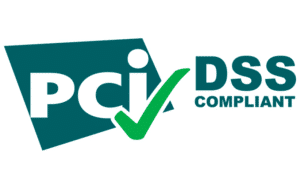Cross-border payments are transactions where the receiver and the payer are located in two different countries. In practice, these transactions are often more expensive than domestic payments. This is simply because multiple parties are involved and pass on their costs. A change in European regulation, CBPR2, obliges the transparent display of prices in transactions in non-euro countries.
Organizations that work internationally often make a lot of cross-border transactions per day. It is a big part of their daily activities. It is therefore extremely important for these organizations to make such payments as safe, efficient and cheap as possible. That makes international collaboration a lot more attractive.
Of course, there is also a great deal of trade within Europe. This results in many money movements between different countries. Not all of these countries have the euro as their main currency. Think of Norway, Denmark or Hungary. All the more reason to establish clear regulations around cross-border payments and exchange fees.
The CBPR regulation already provided more clarity back in 2009. The regulation signified equalized costs in cross-border transactions within Europe. The new amendment to this law, CBPR2, makes the cost of payment transactions within the European Union even more transparent.
What are cross-border payments?
Cross-border payments can be made in several ways. Bank transfers and credit card payments are the most common ways. For cross-border payments companies often charge currency exchange fees. These are fees for exchanging from one currency to another.
- Credit cards are widely used and often the easiest way to make online payments to another country. All you have to do is enter your card details. An example of this is when you make an online purchase in a webshop in Swedish crowns. In such cases high transaction and exchange fees may be charged.
- Organizations also carry out many online transfers. When a transfer is made to a business account with a currency other than the euro, we call this a cross-border payment. Given the large number of these transactions for organizations, the costs for exchange fees and fluctuating exchange rates can quickly add up.
- It is also possible to use a Dutch debit card to withdraw money from ATMs and payment terminals outside the euro zone.
What is CBPR and what does CBPR regulate?
The original regulation (Regulation 924/2009 ) required that the fees for cross-border payments could not be higher than for an equivalent domestic payment in euro. This resulted in lower costs for all cross-border transactions in the eurozone. Please note, that these costs are not the same as the exchange rate. The CBPR regulations do not specifically state which exchange rate should be used for a transaction.
In the non-euro area, cross-border transactions in euro are still expensive. The purpose of the additional regulation to CBPR is to address this problem. The European Regulation applies to all Member States of the European Union.
Who supervises CBPR regulation?
In the Netherlands, the Financial Markets Authority (AFM) supervises the regulation of cross-border payments and exchange fees.
Stay in the know
Our latest blog articles, business developments and finance news. Straight into your inbox.
What has changed with CBPR2?
As of April 19, 2021, CBPR2 tightens the disclosure requirements for payment card transactions. It is an amendment to the earlier regulation CBPR.
The amendment to the EU regulation further enhances price equality for cross-border transactions in euro. Transactions can no longer be more expensive than domestic transactions in the currency of non-euro area Member States. CBRP2 is also contributing to a better provision of information to the payer. The main changes to CBPR2 are as follows:
❯ The costs of payments involving different currencies (from non-eurozone Member States) will become the same;
❯ During every transaction you should be actively informed about the fees that will be charged.
The exchange service provider is required to provide the following information:
❯ At ATMs and payment terminals
The cost of the transaction (expressed as a percentage of the latest exchange rate), the amount payable for the transaction in your currency and the amount payable for the transaction in the payee’s currency.
❯ For online transfers to another bank account
The expected cost of the currency conversion of the transfer, the expected amount of the transfer in your currency and the expected amount of the transfer in the payee’s currency.
Source: AFM
How do we as SimpledCard handle cross-border payments?
SimpledCard makes it easy to check the exchange rates of completed transactions. Each time you complete a cross-border transaction, the exchange rate is displayed in the Card Management System.
Transactions made with a SimpledCard payment card in a currency other than euro (the currency of the card) are automatically converted to euro at the Mastercard conversion rate. The conversion rates are shown on Mastercard’s website. Unlike many other banks and payment solution providers, SimpledCard itself does not add any fees.
When you choose to convert a transaction at the ATM or payment terminal itself, the conversion will be carried out by another party. A different exchange rate will apply and extra costs may be charged by this party. They are obliged to inform you during the transaction. The exchange rates for these specific transactions are not shown in the SimpledCard system.
For SimpledCard users, nothing really changes with the CBPR2 amendment. SimpledCard transactions remain favorable. This is now even more transparent thanks to the exchange rate report. Within the SimpledCard system, you can download a report of all cross-border transactions with corresponding conversion rates at any time.
Do you want to know more about CBPR2 regulation or the transparency we offer for cross-border transactions? Please contact our team of experts.
Stay in the know
Our latest blog articles, business developments and finance news. Straight into your inbox.



